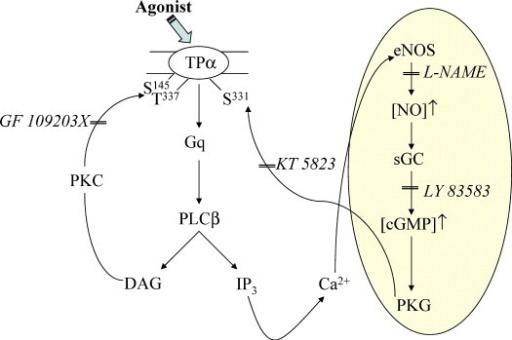 | ||
Homologous desensitization occurs when a receptor decreases its response to a signalling molecule when that agonist is in high concentration. It is a process whereby after prolonged agonist exposure, the receptor is uncoupled from its signaling cascade, and thus the biological effect of receptor activation is attenuated.
Homologous desensitization should not be confused with heterologous desensitisation, which is a different process whereby repeated stimulation of a receptor by an agonist results in desensitization of the stimulated receptor and other receptors on the cell working through similar mechanism to the agonist.
Mechanism
The mechanism of homologous desensitization is as follows (using the β2 receptor as an example):
- Agonist binds and activates receptor which changes to an active conformational state.
- Beta adrenergic receptor kinase (BARK), a cytoplasmic kinase is activated and phosphorylates the C-terminus of the β2 receptor.
- Such phosphorylation increases the affinity of β-arrestin for the receptor, resulting in uncoupling of the α subunit of the heterotrimeric G-protein from the receptor producing desensitization.
References
Homologous desensitization Wikipedia(Text) CC BY-SA
